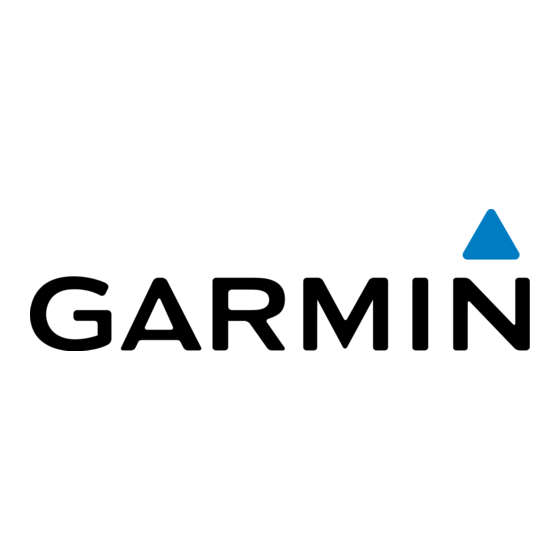Garmin echoMAP CHIRP 70 series Owner's Manual - Page 19
Browse online or download pdf Owner's Manual for Marine GPS System Garmin echoMAP CHIRP 70 series. Garmin echoMAP CHIRP 70 series 34 pages. Fishfinder-chartplotter combo
Also for Garmin echoMAP CHIRP 70 series: Installation Instructions Manual (6 pages)

have connected to your chartplotter and whether you are using
premium maps.
Selecting a Combination
1
Select Combinations.
2
Select a combination.
Customizing a Combination Screen
Not all options are available on all chartplotter models.
1
Select Combinations.
2
Select a combination.
3
Select MENU > Configure Combination.
4
Select an option:
• To change the name, select Name, and enter a new
name.
• To change the number of windows shown in the
combination screen, select Functions, and select the new
number.
• To change the split orientation, select Split.
• To customize the numbers shown on the screen, select
Overlay Numbers.
• To change the data shown in the combination, select the
screen to change, and select the new data.
• To resize the windows, drag the arrows.
Adding a Custom Combination Screen
You can create a custom combination screen to suit your needs.
1
Select Combinations > MENU > Add.
2
Select an option:
• To change the name, select Name, enter a new name,
and select Done.
• To change the number of functions shown, select
Functions, and select a number.
• To change the function of the portion of the screen, select
the area to change, and select a function from the list on
the right.
• To change the vertical or horizontal split orientation of a
multi-function display, select Split, and select an option.
• To change how data appears on the page, select Overlay
Numbers, and select an option.
• To change the type of data shown, select Overlay
Numbers, select a data field, and select the new data
type.
Sonar Views
The sonar views available vary depending on the type of
transducer and optional sounder module connected to the
chartplotter. For example, you can view the Split Frequency
view only if you have a dual-frequency transducer connected.
There are four basic styles of sonar views available: a full-
screen view, a split-screen view that combines two or more
views, a split-zoom view, and a split-frequency view that
displays two different frequencies. You can customize the
settings for each view in the screen. For example, if you are
viewing the split-frequency view, you can separately adjust the
gain for each frequency.
Traditional Sonar View
There are several full-screen views available, depending on the
equipment connected.
Sonar
Sonar
The full-screen Traditional sonar view show a large image of the
sonar readings from a transducer. The range scale along the
right side of the screen shows the depth of detected objects as
the screen scrolls from the right to the left.
Depth information
Suspended targets or fish
Bottom of the body of water
DownVü Sonar View
NOTE: Not all models support DownVü sonar technology and
transducers.
NOTE: To receive DownVü scanning sonar, you need a
compatible chartplotter or fishfinder and a compatible
transducer.
DownVü high-frequency sonar provides a clearer picture below
the boat, providing a more detailed representation of structures
the boat is passing over.
Traditional transducers emit a conical beam. The DownVü
scanning sonar technology emits a narrow beam, similar to the
shape of the beam in a copying machine. This beam provides a
clearer, picture-like image of what is beneath the boat.
SideVü Sonar View
NOTE: Not all models support SideVü sonar and scanning
transducers.
SideVü scanning sonar technology shows you a picture of what
lies to the sides of the boat. You can use this as a search tool to
find structures and fish.
Left side of the boat
Right side of the boat
The transducer on your vessel
Trees
Old tires
Logs
Distance from the side of the boat
SideVü/DownVü Scanning Technology
Instead of a more common conical beam, the SideVü/DownVü
transducer uses a flat beam to scan the water and ground to the
sides of your boat.
15
